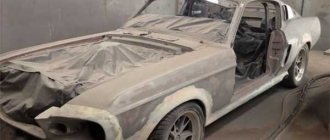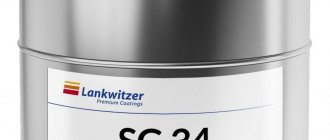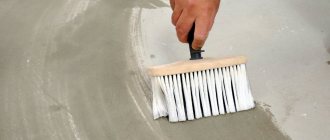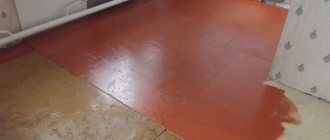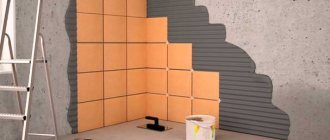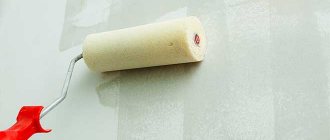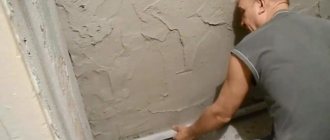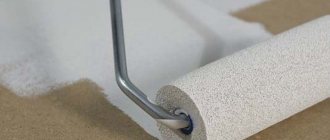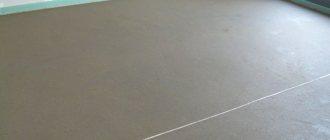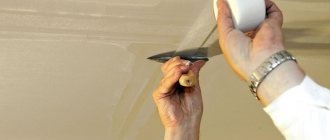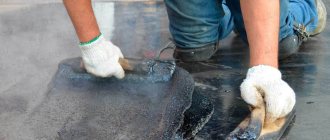Active use of a vehicle sooner or later leads to the appearance of various scratches, chips, and full-size dents on its paintwork. If minor defects can still be somehow ignored, then large ones will have to be dealt with for at least two main reasons. Firstly, it is simply unaesthetic, and the more expensive and reputable the car, the more noticeable the defect is. Secondly, for purely practical reasons: absolutely any scratch can expose the surface of the base metal, which over time will cause its corrosion and destruction.
The solution to the problem is car painting. But before this, the corresponding surfaces must be carefully processed and prepared using primer and putty to prevent damage to the integrity of the coating. Here, novice painters (or those car enthusiasts who are trying to master this process on their own) often have a question: is a primer applied under the putty or vice versa?
Difference between primer and putty
Such questions arise because novice craftsmen do not fully understand (or do not understand at all) how one material differs from another, and also do not distinguish between their role in the process of creating a new or repairing damaged paintwork on a car. Let's start with the primer, since it is a mandatory step in painting the body parts of the car.
The main task of the soil is to create reliable adhesion between the coating and the base metal. In addition, his tasks include:
- Pore filling. If you examine any smooth-looking surface through a microscope, it turns out that it may contain a lot of pores. There is no escape from this, since this is the structure of the surface layers of any material (including metal). Accordingly, air will accumulate in the pores, which prevents reliable adhesion of the paint and the surface.
- Separation of conflicting coverages. Sometimes the painting process requires the application of several layers with different properties, which can cause rejection due to lack of adhesion (adhesion).
- Anti-corrosion protection. Creating a protective barrier on the metal surface that prevents contact with air or water.
Automotive putty in its finished form is a plastic mass used to correct existing surface defects. Obviously, the cavities of cracks, chips or dents must be filled first, otherwise no painting can guarantee an acceptable result. It will, of course, add color, but visible unevenness will remain.
So, no primer is applied under the putty. The opposite happens: first, the surface is puttied to eliminate the visible defect, and only then primed to provide a reliable base for the paintwork.
Types of primers and surface preparation for painting
Author: Anastasia Isakova · Published 06/06/2017 · Updated 01/27/2018
Professional builders will not carry out finishing work without prior preparation. A primer for walls for painting, wallpapering, or putty is simply necessary. Some customers, having read the preliminary estimate, try to challenge this position. Professionals will definitely insist on carrying out this work and explain their importance for quality repairs.
What functions does the primer perform?
Before you begin the process of priming the walls, you need to decide on a number of factors.
The main ones:
- what materials the wall is made of;
- condition of the coating;
- stages of its finishing;
- what will be the finishing?
It should be noted right away that a primer for walls before painting is required, even if the wall, at first glance, has no visible flaws. If we are talking about secondary repairs, then a number of preparatory stages of preparation are required.
There is a term “adhesion” - the ability of materials to adhere to each other. If the paint does not lie tightly, then over time it will begin to peel off in certain places, even if outwardly everything looks perfect after the repair. This can be facilitated by changes in humidity and temperature, mechanical stress, the presence of third-party substances in deep layers, for example, oil stains, and other factors.
Primer before painting will prevent peeling. Adhesion occurs due to the polymer composition of the mixtures.
Under certain negative conditions, in particular poor ventilation of rooms or improper insulation of walls, excess moisture accumulates in them. This provokes the appearance of fungus. One of the components of the composition of primer mixtures are additives (fungicides) that interfere with this process. Where there is an increased risk of fungus, a deep penetration primer with antiseptic properties is used.
Priming the walls before painting significantly reduces paint consumption by 20 to 25%.
Types of compositions
You need to decide what compounds are used for different surfaces before priming the walls before painting.
Universal compositions include acrylic primers. Their additional advantage is that they dry quickly enough, within 24 hours, and do not have a characteristic odor. These are the most commonly used mixtures.
If you are at a loss as to which primer to choose for your walls, you can safely choose acrylic. It is suitable for painting concrete, plaster, and plasterboard walls.
There are alkyd mixtures for metal and wood surfaces. Soils are placed after preliminary preparation of the walls.
Aluminum primers are recommended for wooden walls. But polyvinyl acetate is used for certain types of paints, as well as for wooden, concrete, and plastered surfaces.
Brick and certain types of textured plaster are treated with silicate compounds.
Epoxy compounds are used for exterior work and impregnation of concrete structures. These are two-component primers. They are mixed before use. This is a very durable type of soil.
Surface preparation
Priming for painting walls occurs in several stages. Painting is preceded by cleaning from dust and dirt. To prepare the surface after an existing repair, remove the remains of old paint and wallpaper. Seal gaps, cracks, and uneven areas with putty mixtures. It is better to first open up these places with soil.
After the putty has dried, apply a primer. Only after this can you use paint. The selected primer is thoroughly mixed before use. Most often, water-based compositions are used to cover walls.
On video: preparing surfaces for painting.
How to apply paint primer
To apply the primer, paint brushes, a roller and a spray gun are used. In most cases it is applied using rollers. In hard-to-reach places, prime with paint brushes. The spray gun is suitable for large areas.
When applying priming compounds, gloves, goggles, a respirator and a hat are used as protective equipment.
The optimal temperature for applying primer and drying it quickly is from + 5 to + 25 degrees. The consumption of primer material depends on the type of surface and type of primer. Universal acrylics consume an average of 80 to 120 grams per 1 sq. m.
Primer of walls for water-based emulsion
Primer for water-based paint is an important step before applying the topcoat.
Water-based paint is considered the most harmless type of paint coating - harmless, quick-drying. It has the widest range of colors and shades. It is prepared on the basis of white paint by adding coloring pigments.
Construction supermarkets have special equipment with which paints are mixed. You are offered a layout of color shades under a certain number and name. The computer analyzes the colors and numbers of pigments that should give a given shade. In addition to the paint, the client buys the recommended pigment. Pigment is added to the dispenser of the device and mixed with paint. The result is the color that was previously selected on the layout.
Preparing new walls for painting with water-based paint:
- The plastered or plasterboard surface is primed.
- Then putty the starting layer, level the surface using an abrasive mesh.
- After the layer has dried, apply finishing putty. Then sand with a fine-grained mesh.
- A layer of primer is applied.
- When the primer has dried, the wall is coated with water-based paint in two layers.
To ensure that the paint lays perfectly and is guaranteed not to cause cracks, fiberglass is additionally used.
The primer for painting with water-based paint is thoroughly mixed beforehand so that all components are evenly distributed. A universal acrylic primer is most often used. It is packaged in containers of various volumes from 1 to 10 liters.
It is recommended to prime old walls before painting (for water-based paint) twice.
The most famous primer manufacturers
Among Russian manufacturers, the company Birss stands out. The composition “Betonkontakt” (universal) is in demand. It has proven itself well as a preparatory layer for painting both for interior finishing work and for exterior use.
Ceresit is a German concern. Under his license, soils are produced in many countries, including Russia. The most popular brand is ST-17. This is a universal primer, including for painting.
Another popular German brand is Knauf. The line of the most famous compositions includes: KNAUF-Kvartsgrund (universal primer mixture), KNAUF-Izogrund (deep penetration), KNAUF-Tiefengrund (for interior finishing work).
To summarize, we can conclude that the use of a primer significantly improves the quality characteristics of finishing work. It protects the surface from temperature changes, humidity, mold and mildew. Its use guarantees that the paint will stay on the wall surface reliably and for a long time, so experienced builders always recommend choosing a primer before painting.
The instructions for use indicate for which surfaces it is used and in what proportions. Additional advice on which primer to choose can be obtained from specialists at construction supermarkets and on manufacturers’ websites.
Which putty is better and how to use it
Since we have already understood a little about how one component differs from another, it would not be amiss to consider the issue of their selection and practical application. Automotive putty is selected depending on the existing situation regarding the active base substance.
| Type | Application | Peculiarities |
| Fiberglass. | Used to level out large dents as a rough layer. Has good elasticity. | Creates a reliable reinforcing layer. It is quite difficult to process and requires leveling with a finishing layer. |
| Universal coarse grain. | Also applies to coarse putties with high elasticity. | Its advantages are good adhesion and low shrinkage. |
| Fine-grained. | This is a finishing automotive putty that is used to remove pores in metal and level the surface before priming. | Easy to process, can be used for parts made of fiberglass and plastics. |
| Acrylic. | Used for processing large areas. Can successfully replace finishing mass. | It differs from previous types in its liquid structure. It is a kind of putty primer because it can be directly coated with paint. |
Before applying the main mass, the surface must be thoroughly treated. This process includes sanding, removing old coating, rust, dust and degreasing. Next, an anti-corrosion primer and putty can be applied, which will have an additional adhesion effect. This is perhaps the only case when the base is created under putty. The main mass is applied in 2–3 layers with a total thickness of up to 3 mm. It is not recommended to do more, since large internal stresses arise in the putty, and it can simply crack.
Allow 20 minutes to dry before applying the next coat.
Selecting and applying a primer
When the surface geometry has been completely recreated, you can begin to treat with primer, which will ensure reliable adhesion of the paint layer. Before this, a few words have already been said about the properties of the primer, which mainly determine its classification. Let's consider its types in more detail.
- Epoxy. This is a liquid mixture containing chromium plating or inert substances. Used to counteract moisture and other aggressive compounds. Such primers (for example, GF21, FL-OZK) do not require finishing sanding. Except for cases where the paintwork has visible defects (drips).
- Primer. This is the so-called primary primer, or leveler. It is used for anti-corrosion treatment (can be applied before puttying) and improving adhesion.
- Sealant. This is the finishing layer of primer, which is designed to protect it and deactivate the solvent properties of the paint.
To apply the primer, you can use paint guns or spray guns, in which liquid is sprayed under a pressure of at least 2 atmospheres. Before doing this, it is recommended to clean the surface without fail and apply anti-silicone to degrease. Primary primers are usually applied in 2 thin layers, between which a pause of up to one and a half hours of drying is required. After this, secondary soil is applied 3 layers thick. Before applying the next layer, wait up to 10 minutes to allow the liquid to dry and become matte.
The process of painting car body elements is a rather painstaking task, which must necessarily combine such steps as primer and putty. The quality of all work done to prepare the car for painting largely depends on their choice, the correct order of their application and the correct combination.
Epoxy primer for cars has recently become quite a popular substance and is used as an anti-corrosion coating. This type of soil is used to process not only vehicles, but also other large items.
How to dilute epoxy primer?
Either a special thinner or xylene is used as a thinner. It can be used as a primer that improves resistance to chipping during vehicle operation, as it significantly improves the adhesion of the paintwork.
Interesting materials:
How to return standard icons in Windows 7? How to return Windows 10 screen settings to default? How to return default applications to Windows 10? How to return the default task manager in Windows 7? How to return the default welcome screen in Windows 7? How to return the default background in Windows 10? How to return the standard Windows 10 interface? How to return standard photo viewing to Windows 10? How to return default startup in Windows 10? How to return to the standard desktop on Windows 10?
What is epoxy primer
Epoxy-based primer belongs to the class of two-component paint coatings designed to protect metal coatings from corrosion. They are produced in metal cans of various capacities or in the form of an aerosol. The last type of substance differs from the canned variety only in the method of application.
Epoxy primer: properties, advantages, disadvantages
Epoxy primer for metal for cars is essentially a multifunctional substance, but the main function is to protect the surface from corrosion and improve adhesion.
In addition, a substance of this type is often used as a thermoplastic insulator. Such qualities are ensured due to the composition - special chemicals and epoxy resins.
Automotive epoxy primer has both advantages and disadvantages. The positive qualities include the following:
- resistance to external mechanical damage;
- does not allow water to pass through;
- provides excellent adhesion;
- plastic and durable;
- heat resistant;
- durable;
- layers lay down evenly and dry quickly;
- environmental friendliness - despite the fact that the composition contains a huge number of chemical elements, the substance does not pose a danger to the environment and human health. But you should still take precautions when working with the substance.
There are also negative sides:
- the epoxy base takes a long time to dry - at a temperature of about 20 degrees, complete drying will take at least 12 hours;
- You cannot use high-temperature drying - as bubbles and cracks will form on the surface, which will make further high-quality painting impossible.
Therefore, you can only use epoxy primer for metal if you have time.
Classification
There are quite a few varieties of this substance - each manufacturer produces several subspecies. In general, epoxy primer for metal is divided into two types:
- one-component - such a primer does not contain a hardener, which adds one, but significant disadvantage - it takes too long to dry;
- two- or multi-component - the composition includes high-quality hardeners, so the drying process is much faster - about 12 hours. Moreover, excellent value for money.
The primer is available in metal cans and in aerosol form.
Epoxy primer: why it is needed and how to use it correctly
Epoxy primer for metal - what is this material, what is it for and what properties does it have? Since I had to work with him several times, I will try to tell you about him in detail. I will also describe the technology for its application.
Epoxy primer is a durable and effective anti-corrosion agent
Scope of use
Painting with epoxy primer is in demand not only when working on a vehicle - this type of substance can be used to coat other large objects, but only metal ones.
Important! The primer for concrete work should not be confused with the one used for metal work. These are completely different products in composition, and the result of the work can be unpredictable, not in the positive sense of the word.
In general, “epoxy” can be used in the following cases:
- on top of “bare” metal - it can be either steel or aluminum;
- over a mixed surface - with putty;
- as a final insulating layer;
- as a means of improving surface resistance to mechanical damage;
- application to fiberglass parts, but only as the first layer.
In any case, before you start treating the surface, you need to carefully read the instructions and make sure that this particular type of primer is suitable for a particular type of surface.
Putty for acid primer
Can putty be applied over etching (acidic primer)? Manufacturers of acidic soils do not recommend this. The phosphoric acid in most acidic primers will inhibit the cure of the putty and can cause adhesion problems. The putty must be applied before applying the acid primer. If corrosion remains on the metal, then you need to apply an acidic primer, then isolate it with acrylic primer, then sand it (but not wipe it) to apply putty.
Regarding the application of acid primer to putty. Although there is no need to do this, there are times when you need to prime the area next to the putty. Acid primers can be applied to putty that has completely hardened (within 12 hours). If we are talking about recently hardened putty, then acid primer cannot be applied.
What about epoxy primer? Putty can be applied to epoxy primer. To do this, the soil must reach a sufficient degree of curing.
Surface for epoxy primer
Before processing, you should properly prepare the surface - this way epoxy primer for cars adheres much better. The work algorithm is approximately as follows:
- clean the body from old paintwork and rust using a sandblaster or grinder;
- if necessary, carry out mechanical straightening;
- degrease the surface;
- treat the surface with anti-corrosion agents;
- defects need to be puttied;
- After the putty has dried, sand the surface.
Important: when working with the substance, you must follow safety precautions. The primer must be used strictly according to the manufacturer's instructions. Drafts and dust should not be allowed to form in the room.
Features of using aerosol
Epoxy primer in the form of an aerosol is used as an anti-corrosion coating; it should be used on the following surfaces:
- galvanized;
- made of ferrous metal;
- light alloy.
Can also be used as a base for various enamels.
Important! The following types of enamels are incompatible with this type of epoxy primer:
- alkyd-acrylic;
- alkyd-urethane;
- polyvinyl chloride.
It is better to use soil in such a container to eliminate small defects.
The surface must be prepared according to the algorithm described above. The further work algorithm is as follows:
- The can must be shaken well;
- spraying should be carried out at an angle of 90 degrees;
- the balloon dispenser should be located at a distance of 20–30 cm from the surface to be treated;
- the substance should be applied in 2-3 layers with a time interval of 25–30 minutes;
- You need to spray the primer smoothly, without stopping in one place.
Important! Use protective equipment while working (respirator, gloves).
What is epoxy primer?
Epoxy primer is a modern material that does an excellent job of protecting metal surfaces from rust. The basis of the primer is a special high quality resin. In addition, the composition includes the presence of various active additives (polyamines) with unique chemical properties. Thanks to this, the material has good anti-corrosion and adhesive properties, and also perfectly withstands exposure to aggressive environments.
How to choose an epoxy primer
There are 2 types of this primer coating:
- For metal as an anti-corrosion agent. Covers galvanized surfaces, ferrous metals and light alloys. Epoxy primer for cars is often used. Due to its high degree of wear resistance, the composition provides reliable protection for the body and metal parts of the car that are subject to minor mechanical damage. After primer has been applied to the base of the surface, the surface is further processed using various types of enamel (glypthal, polyurethane) and other compatible paint materials. I advise you to take this point into account: two-component epoxy primer is incompatible for use with alkyd-acrylic, alkyd-urethane, polyvinyl chloride and other similar paint coatings.
- Epoxy primer for concrete is used in construction work. To make self-leveling floors, you cannot do without such a primer with its unique characteristics. The composition has an excellent ability to provide absorbent and non-absorbent substrates with a high degree of adhesiveness. This ensures strong adhesion to surface substrates, even if they are not particularly prepared. This primer can be used indoors, since the solution does not smell anything and dries quickly. The time required to dry the coating is about two hours. When working with this material, the use of solvents is not required.
Primer for car
In order for the surface to be processed correctly and efficiently, the type of soil must be selected correctly. There are many of them on the market, let’s highlight the most popular ones:
- acrylic - used not only for metal, but also for plastic and wood. Excellent resistance to temperature changes, moisture and other negative factors;
- anti-corrosion - not only protects the surface from corrosion, but also improves the adhesion of paint to the surface;
- strengthening – used to eliminate various types of defects, also characterized by high adhesion rates;
- acidic for metal - “corrodes” a thin layer of metal to improve the adhesion of paint to the surface.
How to prime a car body
If you plan to work with small defects, a spray can is quite suitable. The primer in a metal can must first be mixed with a solvent and, if necessary, a hardener. The latter is necessary if a one-component type of product is used.
The substance must be thoroughly stirred until smooth. The hardener must be added in stages, depending on the number of layers applied.
The composition must be diluted strictly as written in the instructions. You need to apply the substance with a roller or brush; you can also use a spray gun. The primer is applied with a brush or roller, taking into account the following rules:
- the first layer is very thin;
- After 15 minutes you can apply the second layer, and after another 15 minutes the third layer. Without reference to a time interval - you can apply a new layer when the previous one becomes matte;
- you need to apply the substance smoothly, but without staying in one place for a long time;
- Avoid abrupt transitions and gaps.
Using a spray gun, apply the primer as follows:
- the first layer should be thin and even, so the distance from the surface to the sprayer should be 20–30 cm;
- In order for the substance to be evenly distributed over the surface, the movements must be cross.
With this technology of applying the substance, there may be smudges and other minor defects, which can be easily removed by sanding before painting.
The room where the car surface is being primed should be free of dust, drafts and dirt. It is better if the lighting is daylight spectrum, of moderate brightness.
If you plan to prime not the entire car, but only individual parts, the “non-working” areas must be covered with film and masking tape. The windows and headlights must also be covered.
Important! Do not forget about personal protective equipment while working!
Application of epoxy primer. Preparation for use
Automotive primer affects the appearance and quality, so its application requires a careful approach.
Epoxy primer is used in cases where the part cannot be subject to any mechanical stress. Before starting work, the master must put on special protective equipment: a mask with a filter, goggles and gloves.
The color of the automotive epoxy primer is gray, application in one layer. One-component primer is sold ready-made, while two-component primer requires dilution.
Dilution can be by volume or weight.
To use automotive epoxy primer, you need to prepare the following tools:
- spray gun for uniform application of the composition;
- grinding wheel for quick results;
- alcohol, for degreasing;
- sandpaper for cleaning defects.
Before using epoxy primer, you need to prepare the surface of the car. If you need to prime the entire car, you need to glue the headlights, windows, metal radiator grilles and other elements with tape or a special material. And when priming one part, it is first removed and processed separately. All surfaces to be treated are thoroughly degreased. If there are traces of rust, remove them with sandpaper and dry the wet surface.
Application using "wet on wet" technology
The essence of painting a car “wet on wet” is that applying subsequent layers does not require drying of the previous ones. Its use allows the master to speed up the painting process.
The grind of the primer is very fine and makes it possible to stretch very well. This is convenient in that you don’t have to cover the car with secondary primer, since epoxy primers can be painted.
In this case, the part will be prepared using P320 abrasive.
After sanding, we blow off the parts and prepare a two-component epoxy primer. It is necessary to add a hardener to the main component in proportions of 4:1 and approximately 5-10% thinner. Next, mix thoroughly to obtain a homogeneous mass. After degreasing and dusting the part, use one uniform wet layer and wait 20 minutes. Painting over epoxy primer on a car is done only after 20 minutes at twenty degrees.
After time, you can see how the soil has stretched and become matte.
Primer Basics
After pasting the car, you can start diluting the soil. First of all, you need to mix it thoroughly to lift heavy components from the bottom of the jar, and then dilute it with a hardener (it is highly advisable to use only the original one) and a solvent (preferably the original one, but 646 is also possible). The proportions must be indicated on the can.
It is better not to dilute by eye, but to use a special container where you can see the grams.
It is advisable to filter the finished mixture through a proprietary filter or ordinary gauze, folded 3-4 times. Usually it is enough to apply the primer in 2-3 layers. It is extremely important to maintain a drying time of 5-10 minutes between coats.
Otherwise, the soil may boil, which is highly undesirable.
The choice of soil color is of great importance. The paint should cover the primer so that it does not show through at different angles. The universal color is grey.
There are also primers in black, white, red and other colors. Using this palette you can mix primers and get the desired color. It is important to remember that the materials being mixed must be from the same company.
Before applying the primer, you must wipe the car with an antistatic cloth, then degrease it with anti-silicone or alcohol.
According to technology, the first layer needs to be filled normally. But, if the primer is applied to the old paintwork, which in some places has been rubbed down to the old primer, then it is in these places that the new primer can be undermined. To prevent this, you need to spray the first layer and dry it for about 10 minutes.
The second and third layers can be poured, then allowed to dry for 24 hours.
The soil can be treated either dry or with water. It should be remembered here that soils partially absorb water, which over time leads to metal corrosion, therefore, it is better to process dry. A special grinding machine can help with this.
For metallic paint, the body should be sanded with R-600 and R-800 sandpaper, but for regular acrylic, R-400 and R-500 will be sufficient.
New parts need to be given extra attention, because they are covered with shipping primer (usually black). In order for the repair of the machine to be of high quality, the transport soil must be cleaned with R-240 sandpaper down to the metal. After this procedure, you can put 2-3 layers of soil.
Pre-treatment before painting
1 Primer preparation
Surface priming is an operation that precedes painting. The primer prepares the base for the subsequent application of finishing materials, protecting and strengthening it, improving adhesion properties.
Primer tasks:
- improving the adhesion of paint to the surface,
- strengthening the foundation,
- leveling or reducing absorbent properties,
- tying non-adjacent parts of the base,
- reduced consumption and uniform application of paint,
- protection against mold and mildew.
For priming, paints and special primers are used. Most often they are made in relation to a specific material, for example, wood, plastered walls, metal. There are also preparations and paints for general use. The primer can be ready-to-use or in the form of a concentrate that must be diluted in certain proportions.
To work you will need the following tools and additional materials:
3 Primer of walls inside the house and facades
When painting walls, a mandatory rule is that the base should always be stronger than the paint coating applied to it. Primers are mainly applied to plaster or adhesive paint coatings. Their task is to bind numerous particles of dried paint or plaster, which improves the adhesion of paints and makes the base more uniform. They also reduce its absorbent properties, due to which less paint is consumed when painting (usually only one coat of paint is enough after priming). In rooms where there is high air humidity, a waterproof barrier is created on the wall surface. Primers can also be applied to plasterboards and bare exterior walls.
It is better to prime the walls at temperatures above +5 °C.
Before you start priming, you need to clean the wall of any loose plaster, peeling paint or wallpaper. You also need to remove grease stains. All mold must be eliminated accordingly.
ATTENTION:
Fresh plaster can only be primed after 3-4 weeks.
The primer paint should be thoroughly mixed and, if necessary, diluted with a special agent recommended by the manufacturer for these purposes.
The primer is applied using a brush or roller. To achieve the result, it is necessary to apply the number of layers recommended by the manufacturer (this information is usually located on the packaging). Most often, one layer is applied. It is recommended to apply two layers on surfaces with increased absorbent characteristics. The second layer is applied to the base without waiting for the first to dry.
A layer of decorative paint can be applied 24 hours after priming.
If you are not sure which product to choose - a special paint or a primer, conduct a simple experiment. Rub the wall with your finger. If after this a dirty mark remains, this means that the wall must be primed before painting.
The facades are primed in the same way. It must be remembered that work must be performed on dry surfaces not heated by the sun.
4 Primers for walls
There are drugs available on the market that perform several functions simultaneously and are used in any climatic conditions. Their choice depends on the condition of the base and the type of paint that will be used to paint the surface.
The most popular and at the same time universal are:
— primer-strengthening impregnations
– most often these are aqueous dispersions of acrylic resin with additional substances. They strengthen the base and protect against moisture, while simultaneously forming a vapor-permeable film. In addition to improving the adhesion of exterior paints, they also prevent painted walls from showing areas of discoloration. Such impregnations are used for priming walls inside the house. They are used on plasterboard boards, gypsum, cement-lime and lime plasters;
– primer acrylic and latex paints
– used for both external and internal work. They penetrate deeply into the wall and strengthen the surface. They are used as a primer layer for decorative emulsion and acrylic paints;
- solvent-based primers
– these are products that are deeply absorbed into the surface, water-resistant, but highly flammable. They bind particles of plaster and dust located on the surface of the walls. They do not retain water vapor absorbed and evaporated by the walls. Suitable for both indoor and outdoor use. They are used not only for priming plaster and painted surfaces, but also wood and asbestos-cement boards;
Preparing body parts for soil
Putty surfaces must be thoroughly dried before priming. Residual moisture will not be sealed by the primer as it is not sealed (except epoxy) but may be absorbed by it. If paint is applied to wet soil, craters may appear.
The primer should be applied only when the putty has been removed to such a state that its surface becomes smooth and uniform. The places where the old paint remains also need to be given enough attention. They should be sanded with the same grain size.
The finished surface must be cleaned of dust. To do this, wipe it with a slightly damp cloth, after which it is immediately passed dry. This procedure must be performed immediately before degreasing, after which they immediately proceed to applying primer.
Degreasing before priming can be done with either a solvent or anti-silicone. First, they are carried out with a swab soaked in a degreaser, and then they are passed with a dry cloth. This sequence is necessary to ensure that no greasy film remains on the surface.
A dry cloth must be constantly folded so that you can work with the clean side.
Grouting the primed body
Each stage of car painting has its own purpose. The primer is an intermediate layer between the paint and the metal. If the part is puttied, then the primer is placed on the putty.
However, the primer layer itself needs to be sanded, since it initially has some bumpiness.
Grouting of the soil can be done either manually or by machine. You need to work with abrasives very carefully, since a thin layer of primer can be easily wiped off. If this happens, it is convenient to cover the wipes with epoxy primer in an aerosol can.
The finishing primer is sanded with 800 grit. This size is considered optimal for applying paint. If, as a result of grinding, the developing layer indicates defects, then it is necessary to eliminate them with finishing putty, which will then have to be primed again, but this time spot-on.
These places are then sanded again, and so on until the part is perfect.
Let's sum it up
Well-known brands Novol and Reoflex do not yet offer convenient spray cans. The cost of delivery of products from other manufacturers is quite high. Epoxy primer in a can is a very convenient invention, but it can only be used for local and temporary repairs. All the same, you will not be able to properly level the surface for painting in order to carry out a high-quality restoration taking into account all the requirements for the surface of the body.
This type of primer can protect the metal, but it is not very suitable for other difficult applications. The most common way to use such primer with an epoxy base is to use it for temporary sealing of areas with potential corrosion. These are deep chips and scratches, pockets of rust that begin to actively grow. In such cases, the cylinder will be an indispensable purchase. But it’s still better to do a full restoration of the body and prevent the destruction of the metal.
Types of primers for car bodies
There are three main types of primers:
- acrylic;
- epoxy;
- acidic (phosphate, reactive).
Acrylic primer is used to fill small pores of putty and old layers of paint and form an adhesive layer for the base paint. One of the undesirable properties of this soil is hygroscopicity. The moisture accumulated by it contributes to metal corrosion, so acrylic must be dried well.
Epoxy primers form an airtight film, so they are often used as an insulating layer. It can be used for both steel parts and non-ferrous metal parts, as well as for galvanic coatings. This is an excellent waterproofing agent that has high adhesion.
Acidic soils react with metal, forming a film of oxides on it and penetrating into its structure. Such primers are classified as rust converters and are actively used to coat old bodies, where surface grinding does not guarantee complete elimination of corrosion in the pores. Metal protected by acid soil becomes much more resistant to corrosion.
Not all of the soils listed above are fully compatible. For example, epoxy primer is not recommended to be applied over phosphate primer. Moreover, epoxy does not cause a conflict, but simply neutralizes the effect of acidic soil.
However, if the acidic (phosphate) primer is allowed to react with the base for a few hours, it can be opened with epoxy primer. Acrylic primer can be applied immediately as it does not contain acid neutralizing agents.
How long does it take for acrylic primer to dry on a car?
The main influence on how long it takes for an acrylic primer to dry on a car
, provide conditions. The natural process can take from 3 to 12 hours. In a thermal chamber with a temperature of 60˚, the time can be reduced to 20-30 minutes.
Interesting materials:
How to design a kitchen on the Leroy website? How to design a staircase to the second floor? How to sew a diploma into a folder? How to turn an old chair into a new one? How is post-infarction cardiosclerosis diagnosed? How to wash wet silk items? How to wash things correctly? How to wash hand-painted items? How does a cactus shoot? How to cut spirea?
